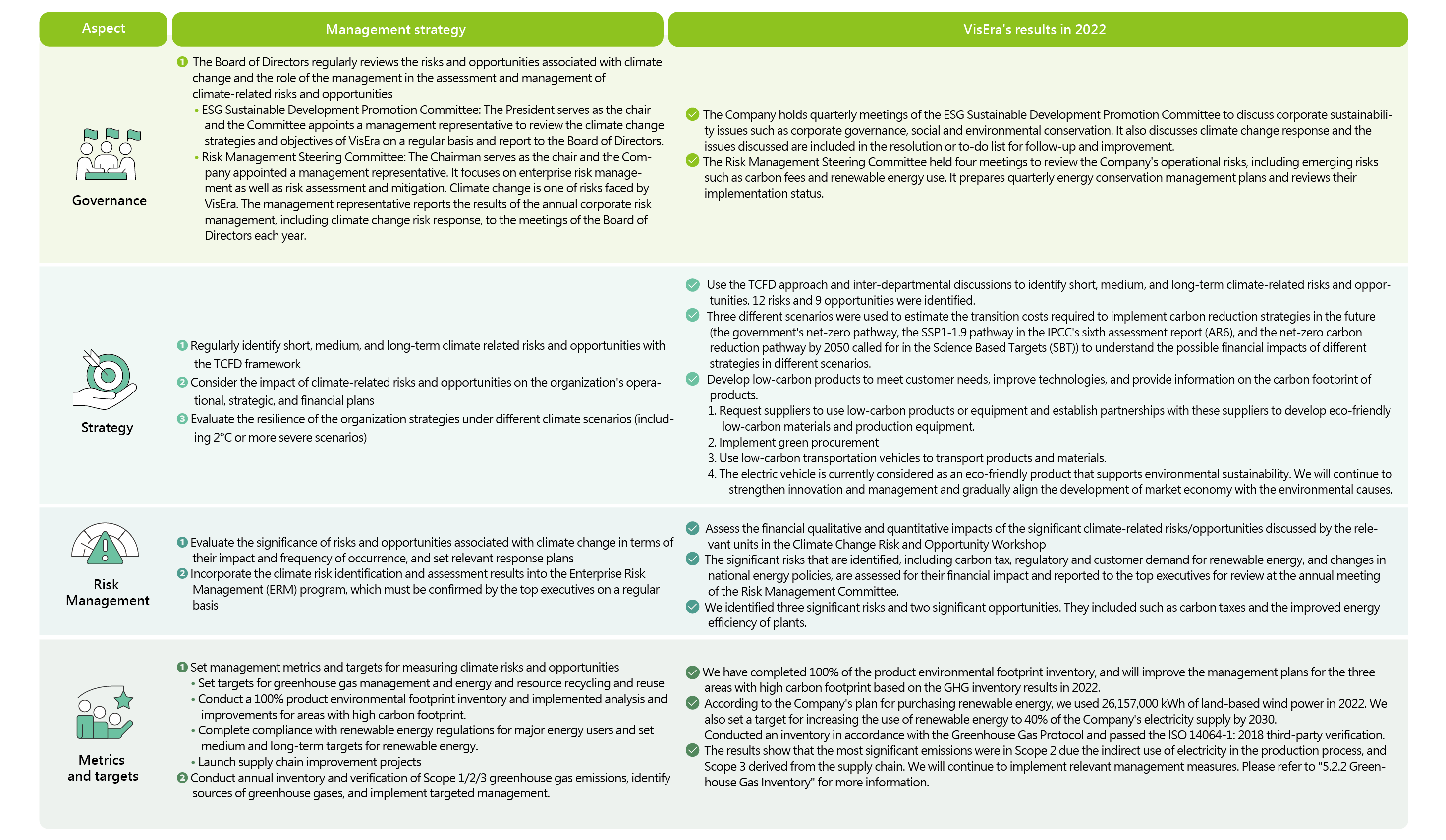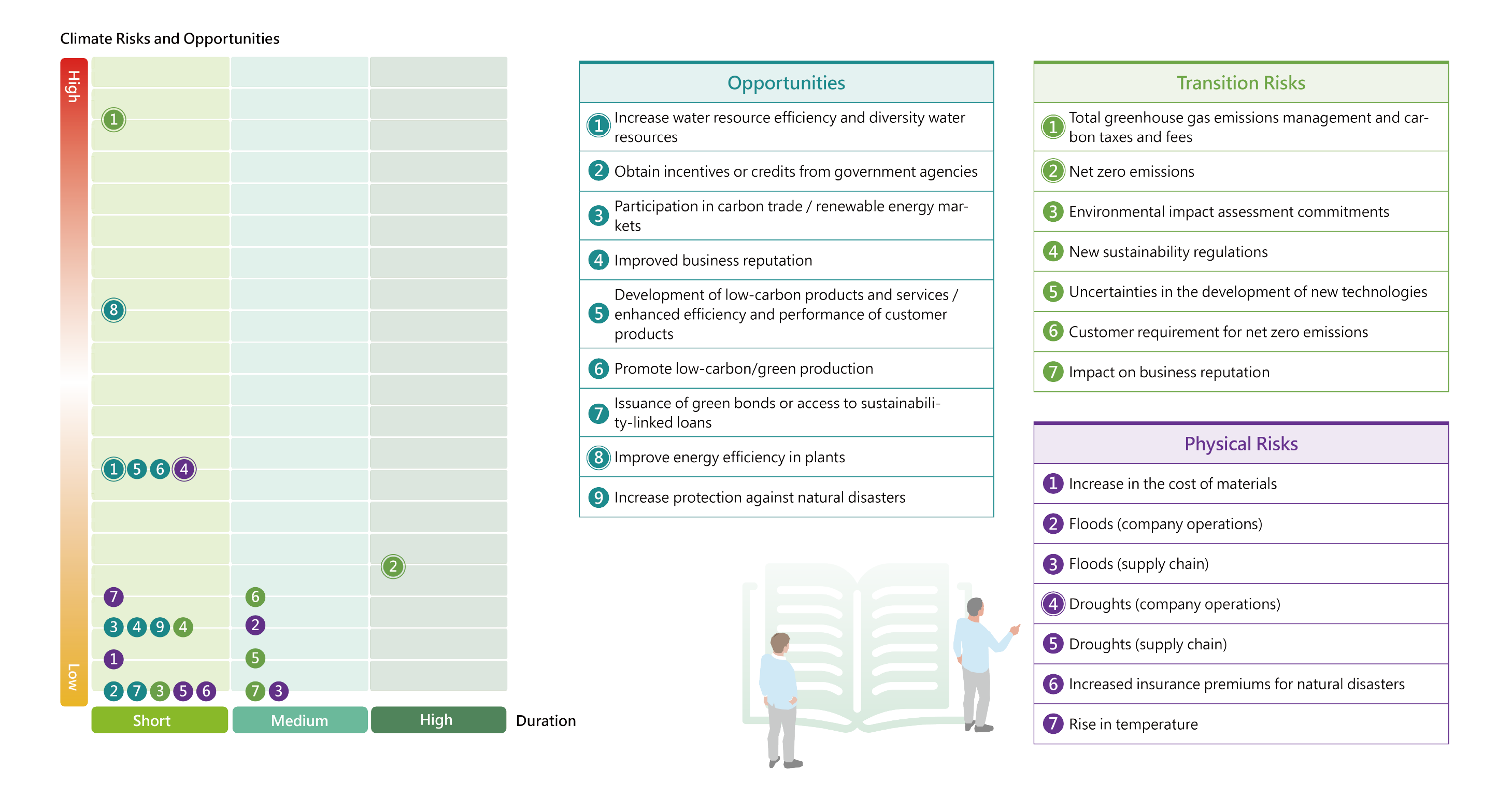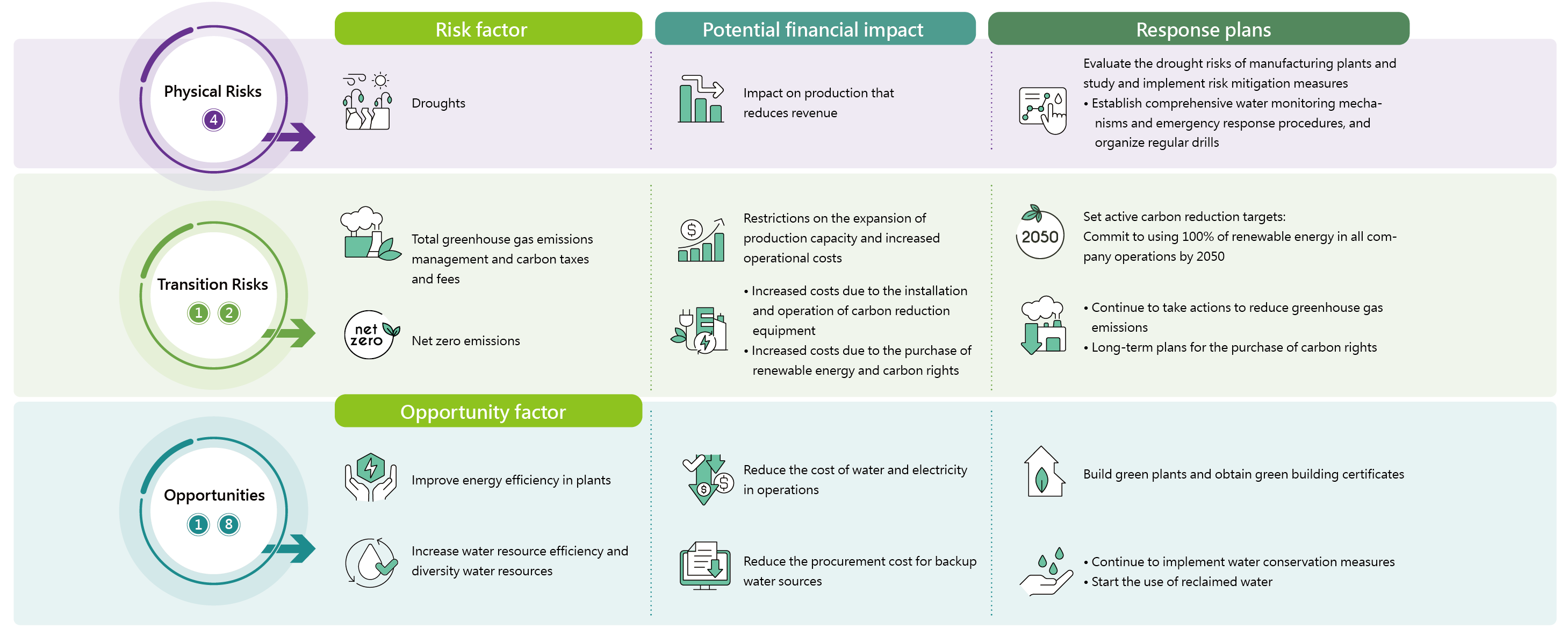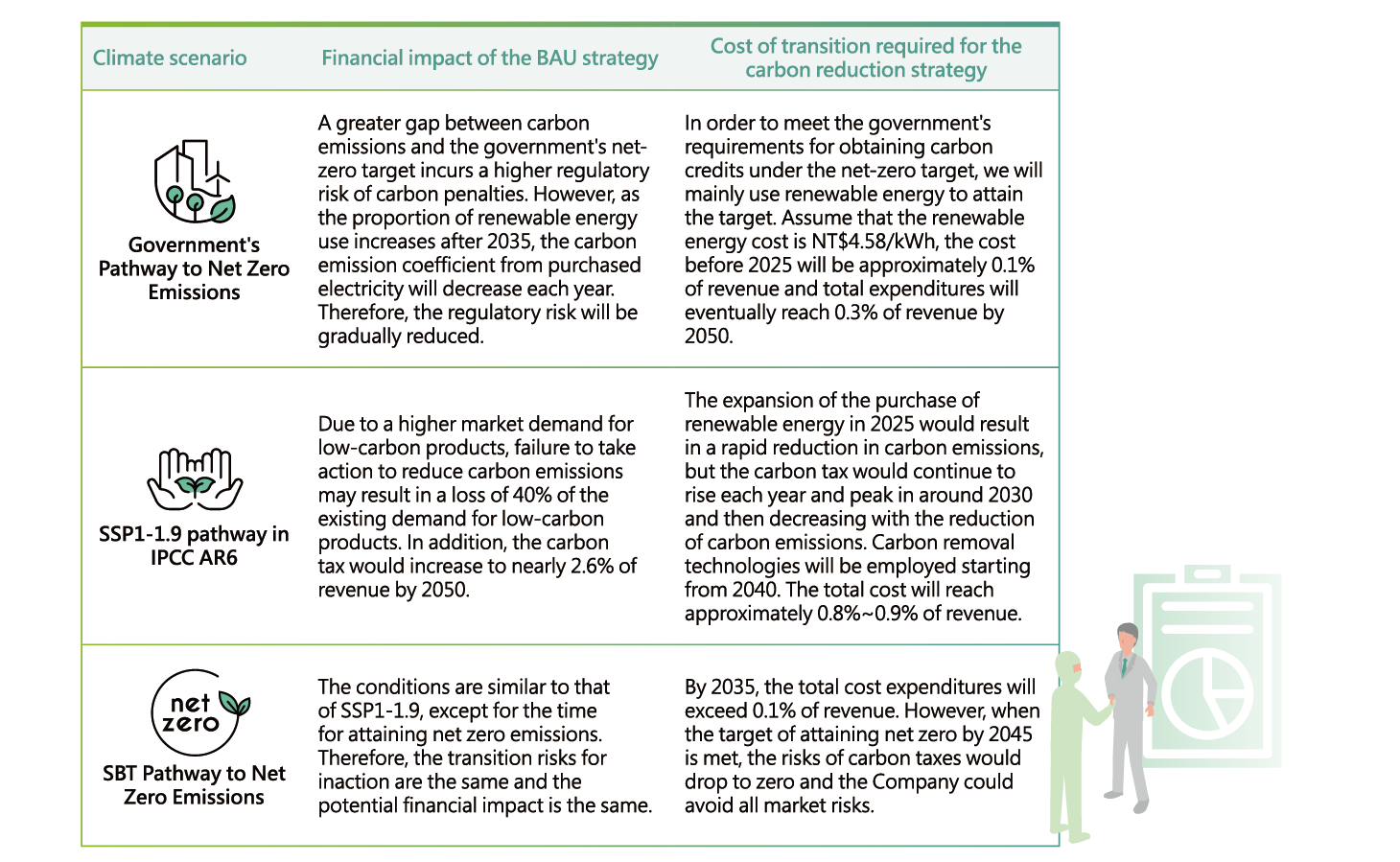In response to increasingly severe cases of extreme weather, it is crucial for companies to build up the resilience to respond to climate disasters in their business operations. VisEra established an Enterprise Risk Management (ERM) system with reference to the ISO 22301 Business Continuity Management standards. We evaluated the frequency of risk events and the severity of their impact on the Company’s operations with a Risk Map, defined the priority and risk level for risk management, and adopted corresponding risk management strategies based on the risk rating. The assessment results showed that the risks associated with climate change include drought, strong typhoons, heavy rainfall, earthquakes, power and water shortages, and increasingly stringent regulatory requirements. VisEra conducts training and exercises on mitigation measures through scenario simulation, and regularly reviews risk changes and responses every quarter. Refer to the “Corporate Risk Management” section for details.

Since 2022, VisEra has adopted the framework of the Task Force on Climate-related Financial Disclosures (TCFD) to identify climate risks and opportunities and referenced research reports of international institutions to evaluate climate change risks and response measures and identify potential risks and opportunities. We also established inter-departmental units to rank the risks and opportunities identified in the “Climate Change Risk and Opportunity Workshop” with respect to policies, regulations, markets, technologies, business reputation, and physical risks. We established metrics based on the identification results for target management to effectively monitor the progress and results of the actions taken in response to climate change, and thereby reduce the financial impact of climate risk on operations. To address the top three risks of net zero carbon emissions, regulations – carbon tax, and rapid climate change – drought, we considered internal and external environmental changes and conducted a quantitative impact financial assessment with reference to the methodologies disclosed by domestic and foreign companies. We developed strategies and actions for climate change with a focus on the four aspects including “governance”, “strategy”, “risk management”, and “metrics and targets” to reduce the impact of climate risks and increase the climate resilience of the organization.

12 risks and 9 opportunities


As the transition risks of climate change such as changes in regulations and market demand may have a long-term and significant impact on the Company’s operations, VisEra has estimated the cost of transition required for the carbon reduction strategy under three different scenarios, including the government’s Pathway to Net Zero Emissions, the SSP1-1.9 pathway in the IPCC’s Sixth Assessment Report (AR6), and the net-zero carbon reduction pathway by 2050 advocated by the Science-Based Targets (SBT) initiative. We ultimately compared the risks to the BAU strategy (risks due to any inaction by VisEra) to measure the potential financial impacts of different strategies under different scenarios.
